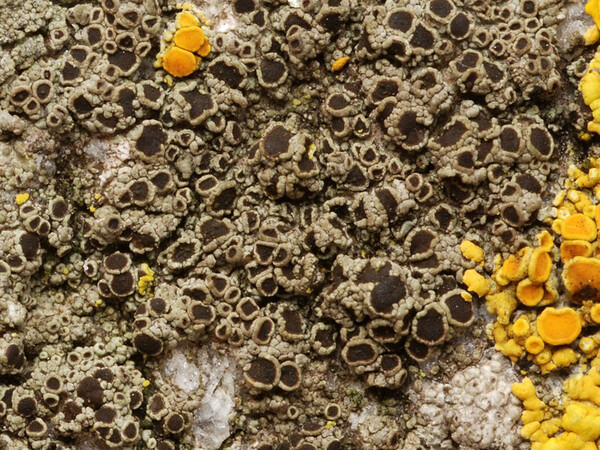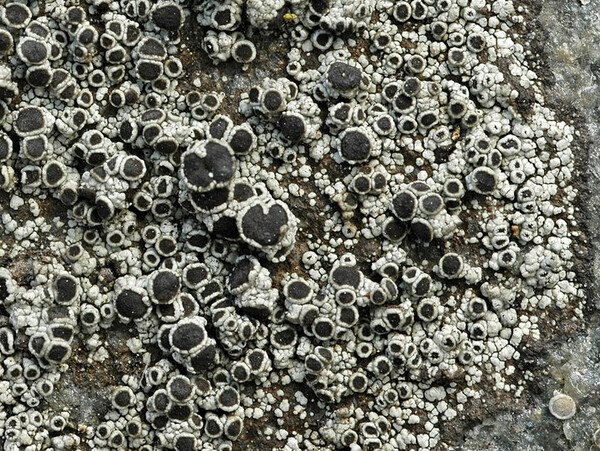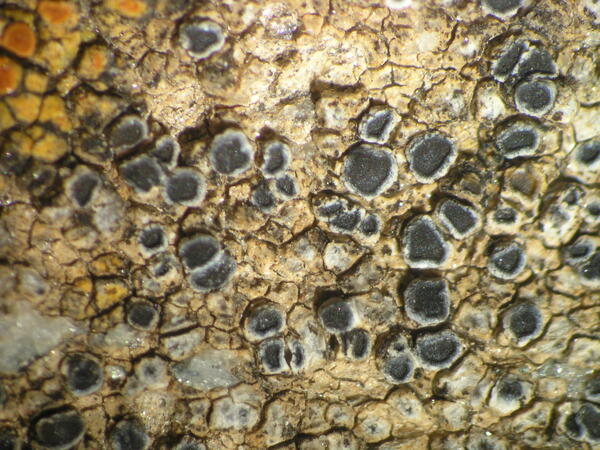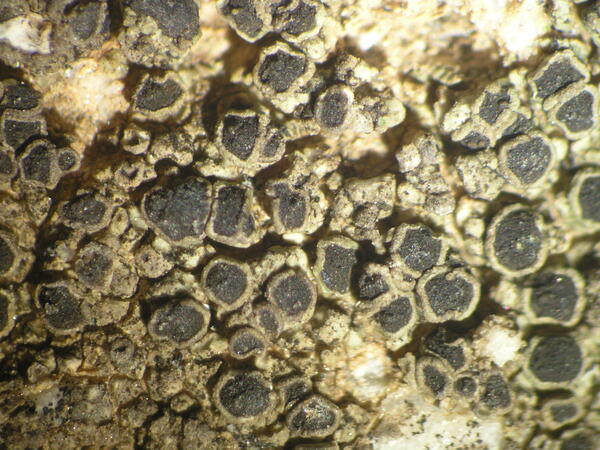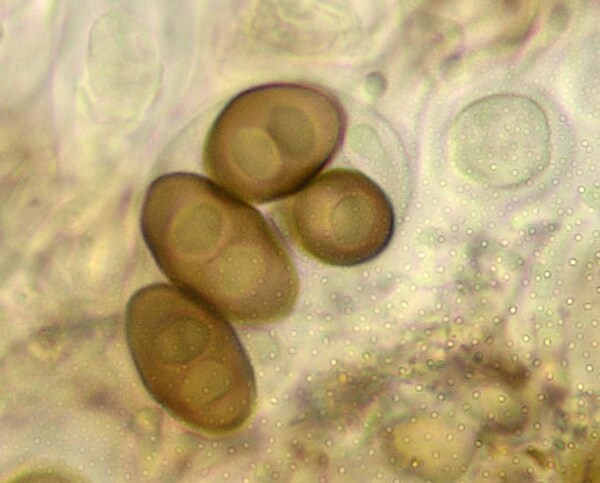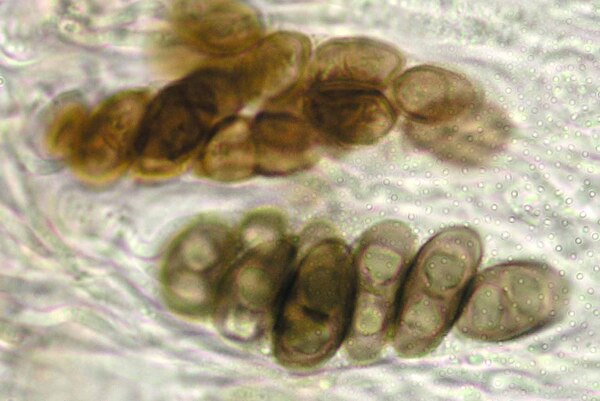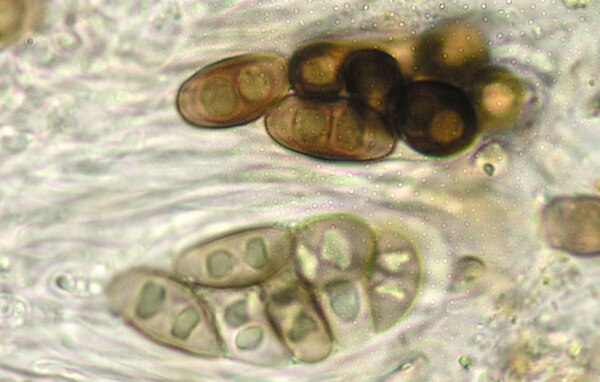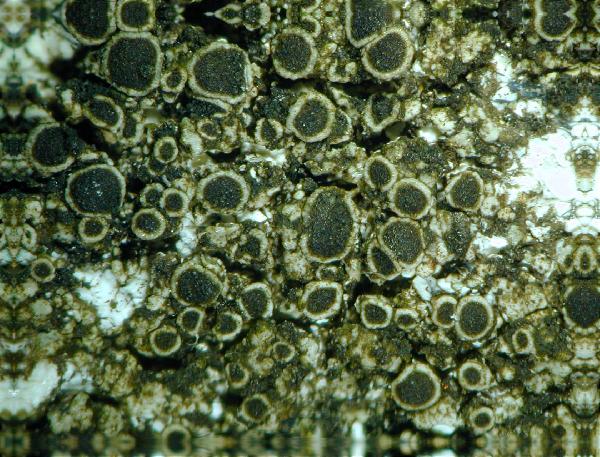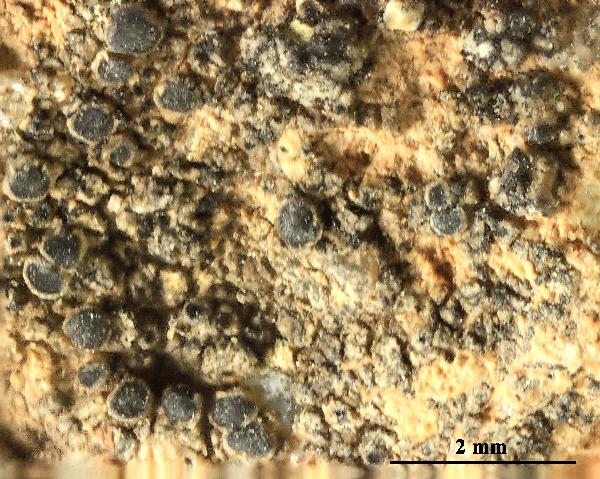Rinodina gennarii Bagl.
Comm. Soc. Critt. Ital., 1: 17, 1861.
Synonyms: Buellia alocizoides (Leight.) A.L. Sm.; Lecanora atra var. accumulata Ach.; Lecanora subexigua Nyl.; Rinodina cinerascens J. Steiner; Rinodina demissa (Flörke) Arnold; Rinodina exigua var. obscurata H. Magn.; Rinodina pallida H. Magn.; Rinodina salina Degel.; Rinodina subexigua (Nyl.) H. Olivier
Distribution: N - VG, Frl, Ven, TAA, Lomb (De Vita & Valcuvia 2004), Piem (Isocrono & al. 2004, Giordani & al. 2014), VA (Piervittori & Isocrono 1999, Valcuvia 2000, Matteucci & al. 2015c), Emil (Nimis & al. 1996, Valcuvia & Savino 2000, Fariselli & al. 2020), Lig (Giralt & Llimona 1997). C - Tosc (Pinna & al. 2018), Laz (Genovesi & al. 2011), Sar (Rizzi & al. 2011, Giordani & al. 2013, Cossu 2013, Cossu & al. 2015). S - Camp (Aprile & al. 2002), Pugl (Nimis & Tretiach 1999), Bas (Nimis & Tretiach 1999), Cal (Puntillo 1996, Puntillo & Puntillo 2004), Si (Caniglia & Grillo 2003, Grillo & Caniglia 2004, Iacolino & Ottonello 2006, Brackel 2008b, Ottonello & al. 2011, Cataldo & Cannavò 2014).
Description: Thallus crustose, thinly episubstratic, rimose to rimose-areolate, sometimes reduced to a few small areoles around the apothecia, whitish to dark grey or grey-brown, dull, rarely delimited by a dark prothallus. Apothecia lecanorine, abundant and usually crowded, adnate, 0.3-0.5(-0.7) mm across, with a dark brown to almost black, epruinose, flat to markedly convex disc and a thin, smooth, finally sometimes excluded thalline margin. Thalline exciple 20-100 µm wide laterally, expsnding in lower part, the cortex 5-10 µm thick; proper exciple 5-20 µm wide laterally, expanded to 20-30(-55) µm at periphery; epithecium dark brown, 5-15 µm high, K-; hymenium colourless, 60-80(-90) µm high, K/I+ blue; paraphyses 1.5-2.5 µm thick at mid-level, not very coherent, the apical cells 3-6 µm wide; hypothecium colourless, up to 150 µm high. Asci 8-spored, narrowly clavate to clavate, the K/I+ blue tholus penetrated by a faintly amyloid apical cushion with parallel or diverging flanks, the wall K/I-, surrounded by a K/I+ blue outer layer, Lecanora-type. Ascospores 1-septate, brown, broadly ellipsoid, sometimes slightly curved, (11-)13-16(-18) x (6-)7-10(-11) µm, Dirinaria-type, not thickened at apex and slightly swollen at septum in K, the torus absent, the ontogeny of type B (apical thickenings visible before the insertion of the septum). Pycnidia immersed in thallus, black, pyriform. Conidia bacilliform, 4-6 x c. 1 µm. Photobiont chlorococcoid. Spot tests: K-, C-, KC-, P-, UV-. Chemistry: without lichen substances. Note: a mainly temperate species found on base-rich or slightly calciferous siliceous substrata, e.g. calciferous schists and sandstone, often also in small urban settlements, on brick walls, mortar, and roofing tiles, mostly below the subalpine belt. The species is very closely related to the epiphytic R. oleae, so much that it was considered as a synonym of the latter by Kaschik (2006).
Growth form: Crustose
Substrata: rocks
Photobiont: green algae other than Trentepohlia
Reproductive strategy: mainly sexual
Commonnes-rarity: (info)
Alpine belt: absent
Subalpine belt: absent
Oromediterranean belt: absent
Montane belt: very rare
Submediterranean belt: common
Padanian area: very rare
Humid submediterranean belt: common
Humid mediterranean belt: rather rare
Dry mediterranean belt: very rare

Predictive model
Herbarium samples


P.L. Nimis; Owner: Department of Life Sciences, University of Trieste
Herbarium: TSB (9127)
2001/11/29

Courtesy Danièle et Olivier Gonnet - Source: https://www.afl-lichenologie.fr/Photos_AFL/Photos_AFL_R/Textes_R/Rinodina_gennarii.htm
France, La-Roche-sur-Foron - Haute-Savoie
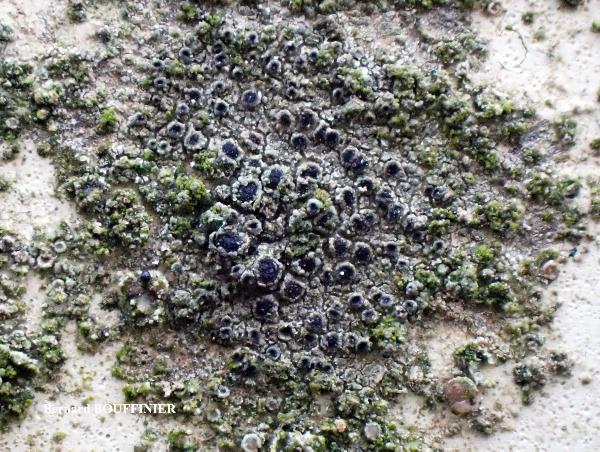
Bernard Bouffinier - Source: http://www.lichensmaritimes.org/index.php?task=fiche&lichen=616&lang=en
France, Tregarvan

Bernard Bouffinier - Source: http://www.lichensmaritimes.org/index.php?task=fiche&lichen=616&lang=en
France, Plougastel-Daoulas
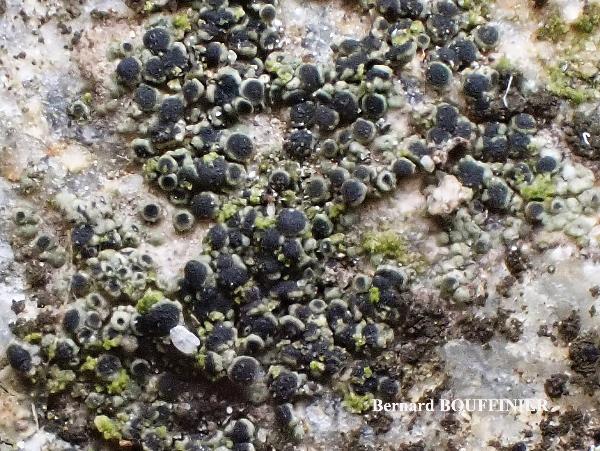
Bernard Bouffinier - Source: http://www.lichensmaritimes.org/index.php?task=fiche&lichen=616&lang=en
France, Plougastel-Daoulas
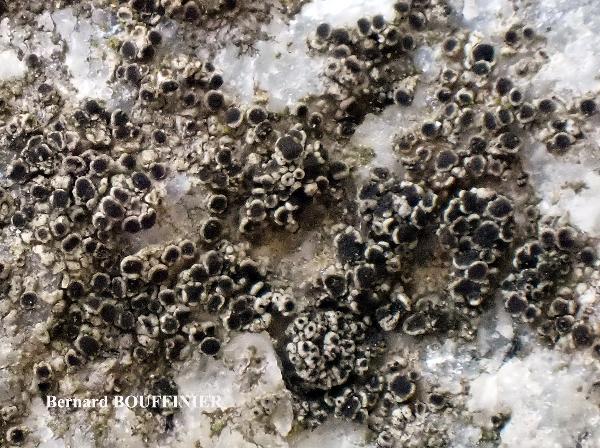
Bernard Bouffinier - Source: http://www.lichensmaritimes.org/index.php?task=fiche&lichen=616&lang=en
France, Plougastel-Daoulas

Bernard Bouffinier - Source: http://www.lichensmaritimes.org/index.php?task=fiche&lichen=616&lang=en
France, Plougastel-Daoulas
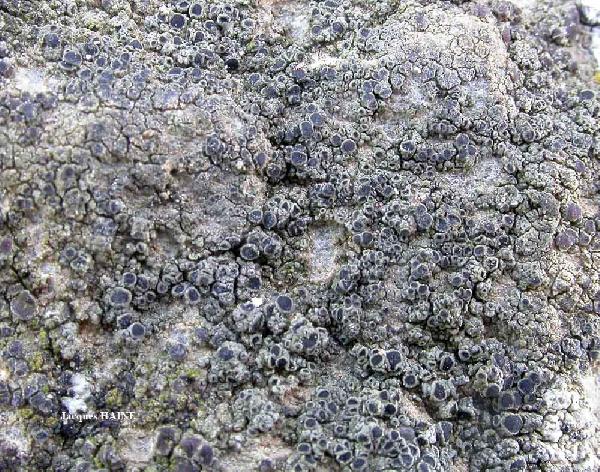
Jacques Haine - Source: http://www.lichensmaritimes.org/index.php?task=fiche&lichen=616&lang=en
France, Ardennes
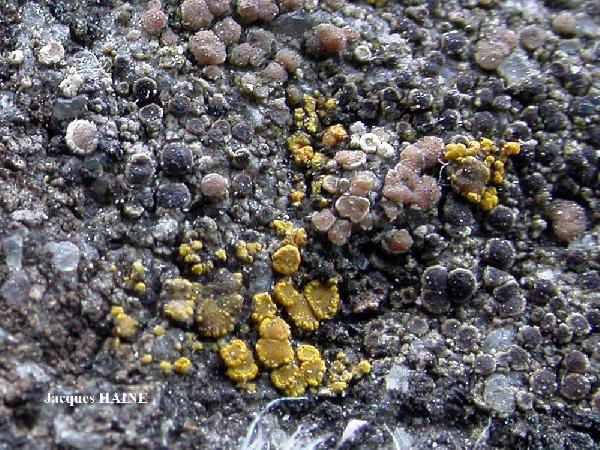
Jacques Haine - Source: http://www.lichensmaritimes.org/index.php?task=fiche&lichen=616&lang=en
France, Ardennes
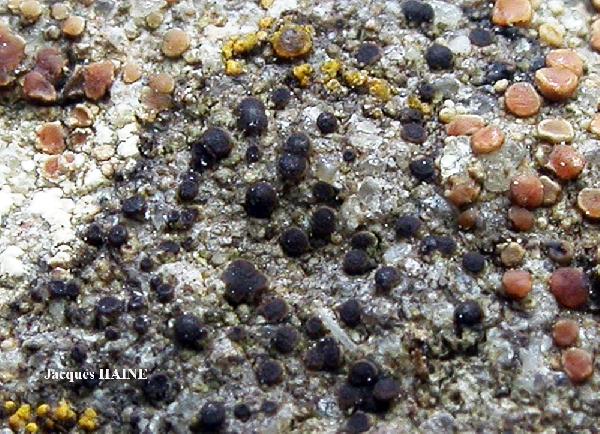
Jacques Haine - Source: http://www.lichensmaritimes.org/index.php?task=fiche&lichen=616&lang=en
France, Cailleux sur mer

Jacques Haine - Source: http://www.lichensmaritimes.org/index.php?task=fiche&lichen=616&lang=en
France, Cailleux sur mer

Jacques Haine - Source: http://www.lichensmaritimes.org/index.php?task=fiche&lichen=616&lang=en
France, Cailleux sur mer
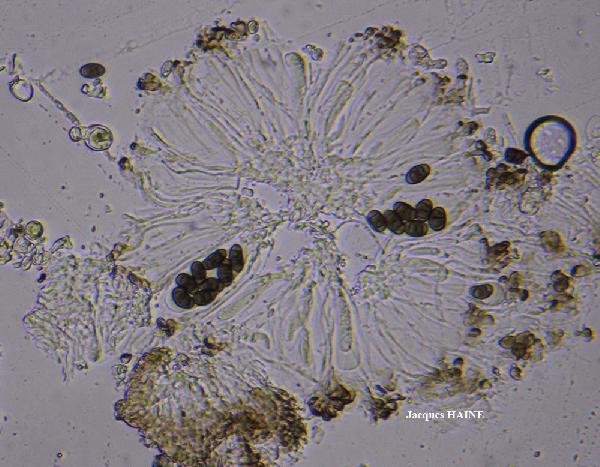
Jacques Haine - Source: http://www.lichensmaritimes.org/index.php?task=fiche&lichen=616&lang=en
France, Cailleux sur mer
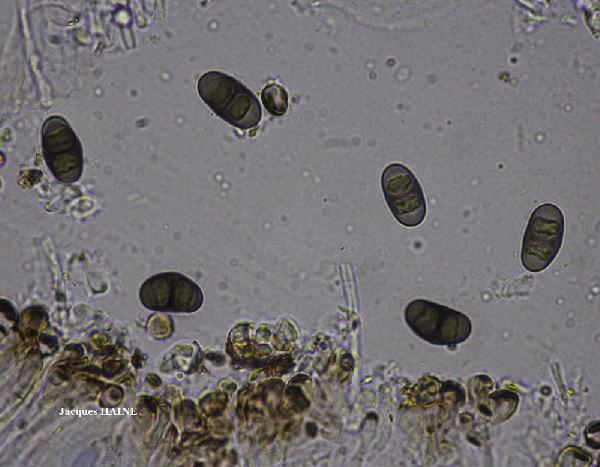
Jacques Haine - Source: http://www.lichensmaritimes.org/index.php?task=fiche&lichen=616&lang=en
France, Cailleux sur mer
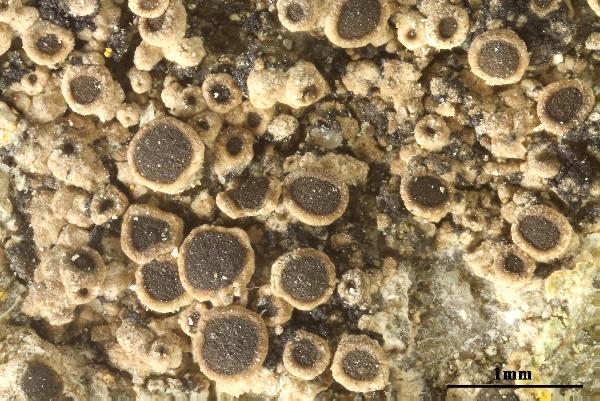

Felix Schumm - CC BY-SA 4.0
[20874], Ireland, County Clare (Contae an Cláir), 2.2 km NW of the
centre of Doonbeg. 'White Strand Doobeg', souther bound, 52°44'47''
N, 9°32'56'' W, 2 m, coastal rocks, on schist. Leg. H. Mayrhofer (no
21840), 17.07.2012, det. H. Mayrhofer. LICHENOTHECA GRAECENSIS
NO. 495 as Rinodina oleae
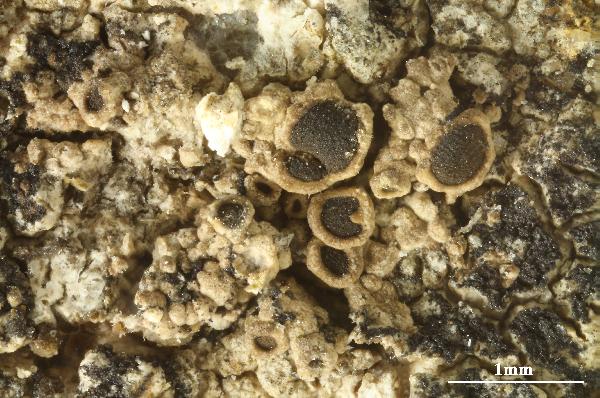

Felix Schumm - CC BY-SA 4.0
[20874], Ireland, County Clare (Contae an Cláir), 2.2 km NW of the
centre of Doonbeg. 'White Strand Doobeg', souther bound, 52°44'47''
N, 9°32'56'' W, 2 m, coastal rocks, on schist. Leg. H. Mayrhofer (no
21840), 17.07.2012, det. H. Mayrhofer. LICHENOTHECA GRAECENSIS
NO. 495 as Rinodina oleae
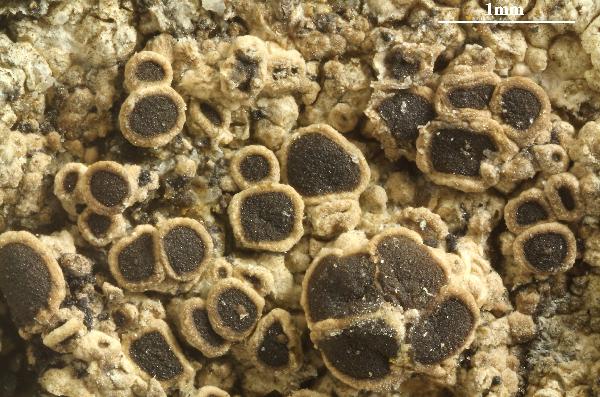

Felix Schumm - CC BY-SA 4.0
[20874], Ireland, County Clare (Contae an Cláir), 2.2 km NW of the
centre of Doonbeg. 'White Strand Doobeg', souther bound, 52°44'47''
N, 9°32'56'' W, 2 m, coastal rocks, on schist. Leg. H. Mayrhofer (no
21840), 17.07.2012, det. H. Mayrhofer. LICHENOTHECA GRAECENSIS
NO. 495 as Rinodina oleae
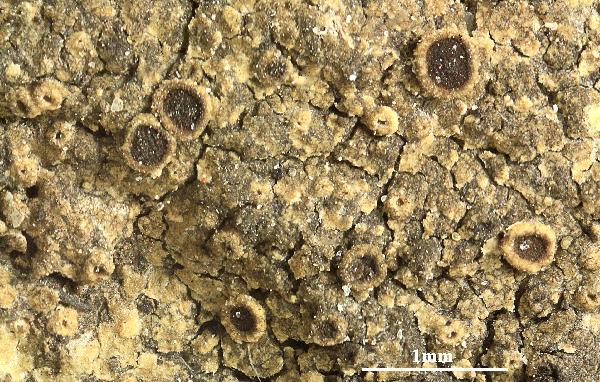

Felix Schumm - CC BY-SA 4.0
[ABL27929], Brazil, Santa Catarina, São Francisco do Sul, S of Prainha.
26°14'06'' S, 48°30'05'' W, 10 m. On coastal granite. Leg. M.
Cáceres & A. Aptroot (no 27929), 8 October 2015, det. A. Aptroot
2015. as Rinodina oleae


Felix Schumm - CC BY-SA 4.0
[ABL27929], Brazil, Santa Catarina, São Francisco do Sul, S of Prainha.
26°14'06'' S, 48°30'05'' W, 10 m. On coastal granite. Leg. M.
Cáceres & A. Aptroot (no 27929), 8 October 2015, det. A. Aptroot
2015. as Rinodina oleae
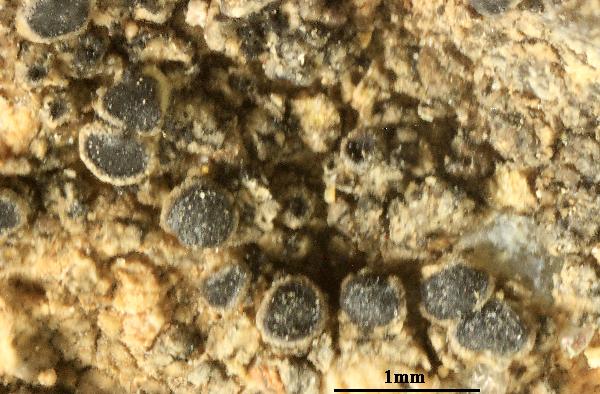

Felix Schumm - CC BY-SA 4.0
[VZR48], Italia. Sardinia. Prov. Nuoro: scopulum Torre Argentina
dictum, prope oppidum Bosa, 5-10 m. Ad saxa eruptiva mollia. Leg. J.
Poelt, M. Tretisch & A- Vezda, 19.7.1897, det. H. Mayrhofer. EX A.
VEZDA: LICHENES RARIORES EXSICCATI NR. 48.
Growth form: Crustose
Substrata: rocks
Photobiont: green algae other than Trentepohlia
Reproductive strategy: mainly sexual
Commonnes-rarity: (info)
Alpine belt: absent
Subalpine belt: absent
Oromediterranean belt: absent
Montane belt: very rare
Submediterranean belt: common
Padanian area: very rare
Humid submediterranean belt: common
Humid mediterranean belt: rather rare
Dry mediterranean belt: very rare

Predictive model
| Herbarium samples |


P.L. Nimis; Owner: Department of Life Sciences, University of Trieste
Herbarium: TSB (9127)
2001/11/29

Courtesy Danièle et Olivier Gonnet - Source: https://www.afl-lichenologie.fr/Photos_AFL/Photos_AFL_R/Textes_R/Rinodina_gennarii.htm
France, La-Roche-sur-Foron - Haute-Savoie

Bernard Bouffinier - Source: http://www.lichensmaritimes.org/index.php?task=fiche&lichen=616&lang=en
France, Tregarvan

Bernard Bouffinier - Source: http://www.lichensmaritimes.org/index.php?task=fiche&lichen=616&lang=en
France, Plougastel-Daoulas

Bernard Bouffinier - Source: http://www.lichensmaritimes.org/index.php?task=fiche&lichen=616&lang=en
France, Plougastel-Daoulas

Bernard Bouffinier - Source: http://www.lichensmaritimes.org/index.php?task=fiche&lichen=616&lang=en
France, Plougastel-Daoulas

Bernard Bouffinier - Source: http://www.lichensmaritimes.org/index.php?task=fiche&lichen=616&lang=en
France, Plougastel-Daoulas

Jacques Haine - Source: http://www.lichensmaritimes.org/index.php?task=fiche&lichen=616&lang=en
France, Ardennes

Jacques Haine - Source: http://www.lichensmaritimes.org/index.php?task=fiche&lichen=616&lang=en
France, Ardennes

Jacques Haine - Source: http://www.lichensmaritimes.org/index.php?task=fiche&lichen=616&lang=en
France, Cailleux sur mer

Jacques Haine - Source: http://www.lichensmaritimes.org/index.php?task=fiche&lichen=616&lang=en
France, Cailleux sur mer

Jacques Haine - Source: http://www.lichensmaritimes.org/index.php?task=fiche&lichen=616&lang=en
France, Cailleux sur mer

Jacques Haine - Source: http://www.lichensmaritimes.org/index.php?task=fiche&lichen=616&lang=en
France, Cailleux sur mer

Jacques Haine - Source: http://www.lichensmaritimes.org/index.php?task=fiche&lichen=616&lang=en
France, Cailleux sur mer


Felix Schumm - CC BY-SA 4.0
[20874], Ireland, County Clare (Contae an Cláir), 2.2 km NW of the centre of Doonbeg. 'White Strand Doobeg', souther bound, 52°44'47'' N, 9°32'56'' W, 2 m, coastal rocks, on schist. Leg. H. Mayrhofer (no 21840), 17.07.2012, det. H. Mayrhofer. LICHENOTHECA GRAECENSIS NO. 495 as Rinodina oleae


Felix Schumm - CC BY-SA 4.0
[20874], Ireland, County Clare (Contae an Cláir), 2.2 km NW of the centre of Doonbeg. 'White Strand Doobeg', souther bound, 52°44'47'' N, 9°32'56'' W, 2 m, coastal rocks, on schist. Leg. H. Mayrhofer (no 21840), 17.07.2012, det. H. Mayrhofer. LICHENOTHECA GRAECENSIS NO. 495 as Rinodina oleae


Felix Schumm - CC BY-SA 4.0
[20874], Ireland, County Clare (Contae an Cláir), 2.2 km NW of the centre of Doonbeg. 'White Strand Doobeg', souther bound, 52°44'47'' N, 9°32'56'' W, 2 m, coastal rocks, on schist. Leg. H. Mayrhofer (no 21840), 17.07.2012, det. H. Mayrhofer. LICHENOTHECA GRAECENSIS NO. 495 as Rinodina oleae


Felix Schumm - CC BY-SA 4.0
[ABL27929], Brazil, Santa Catarina, São Francisco do Sul, S of Prainha. 26°14'06'' S, 48°30'05'' W, 10 m. On coastal granite. Leg. M. Cáceres & A. Aptroot (no 27929), 8 October 2015, det. A. Aptroot 2015. as Rinodina oleae


Felix Schumm - CC BY-SA 4.0
[ABL27929], Brazil, Santa Catarina, São Francisco do Sul, S of Prainha. 26°14'06'' S, 48°30'05'' W, 10 m. On coastal granite. Leg. M. Cáceres & A. Aptroot (no 27929), 8 October 2015, det. A. Aptroot 2015. as Rinodina oleae


 INDEX FUNGORUM
INDEX FUNGORUM
 GBIF
GBIF
 DOLICHENS
DOLICHENS
